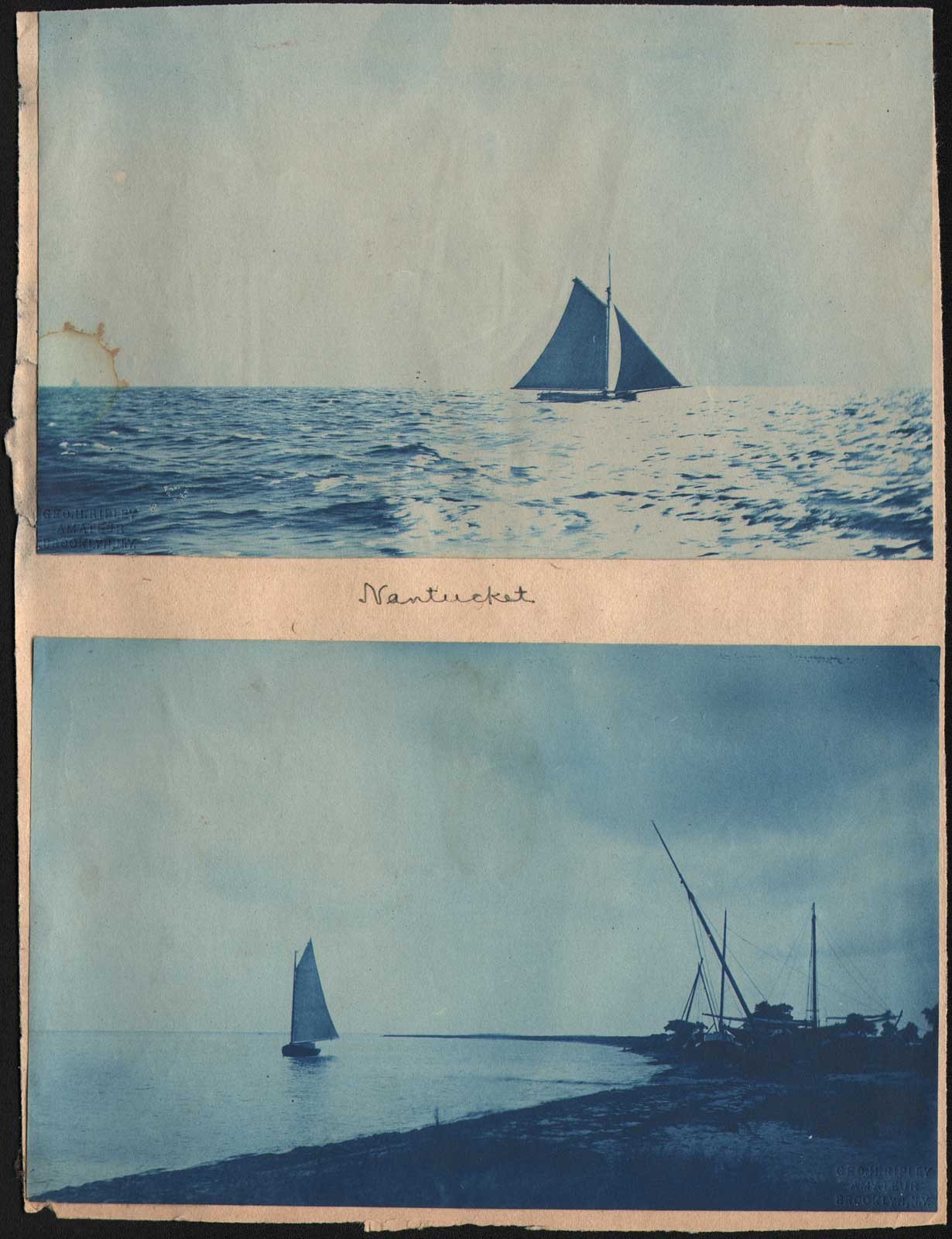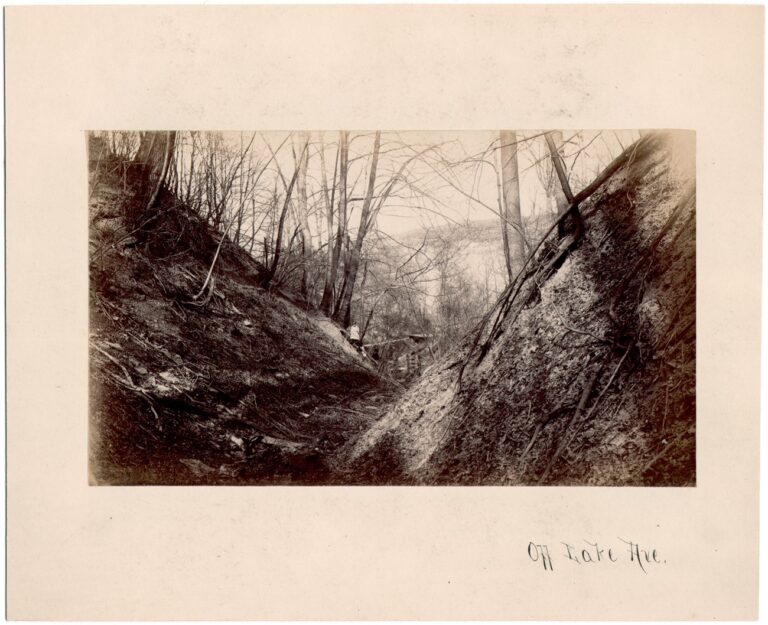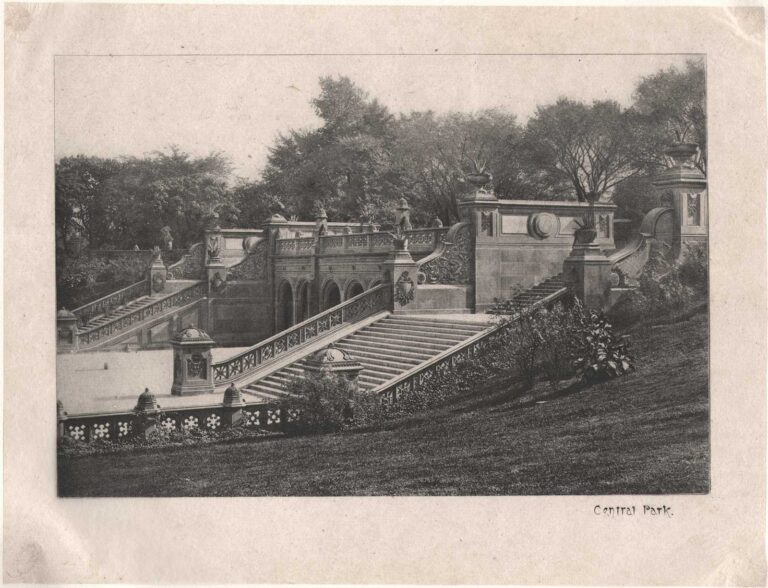
Nantucket
Off the Massachusetts island of Nantucket, two photographs show a sailboat, possibly the small cutter Merlin commissioned by the photographer in 1883, at full sail in top photograph and near the shore at bottom with other vessels beached at far right.
Completely unknown today, George H. Ripley (1848-1899) had a significant presence in the promotion of amateur photography and its’ commercialization through his own dry plate company from the mid 1880’s to about 1890. Family wealth through his father George Clinton Ripley’s 30 year involvement as president of The Home Life Insurance Company of Brooklyn from 1860 seems to have given the young Ripley freedom to pursue an interest in the growing medium and soon-to-be recognized art form.
In 1885, while making his living as a coffee merchant in New York City, Ripley is believed to have first established The Geo. H. Ripley Company in Brooklyn. Working in rented space from a loft warehouse at 30 Tiffany Place and then later at 32 Tiffany Place, (still standing today) the small concern marketed what was known as the “The Ripley Plate”: a photographic dry plate that came in multiple camera formats. His “side hustle” of making the plates and reselling them through all the major New York photographic supply stock houses would give him credible name recognition. Perhaps it is not surprising that 1885 would also find him being one of the founding directors of the newly-formed Society of Amateur Photographers of New York the same year.
Ripley was also a photographer, and an article in Anthony’s Photographic Bulletin for September 11, 1886 noted he used his own Ripley plates for a series of photographs “showing many beautiful views near the Quaker City” of Philadelphia. “They were remarkable for sharpness and fine detail in the shadows, in addition to being very artistic in composition” the journal said.
Given the subject matter of these two cyanotype marine studies, the knowledge he was a passionate yachtsman is also of interest. An 1887 notice in The Brooklyn Daily Eagle said he had become the owner of a 33’ cutter sailboat called the Merlin in 1883. Subsequent research by this website shows the Merlin was a significant watercraft, and was included in two individual drawing plates in the 1885 volume “Small Yachts- Their Design and Construction” by C.P. Kunhardt. The Merlin was actually completed by late June of 1884 by the boat builder Daniel O. Barnard in Brooklyn, and was 30.6′ in total length. In the New York Sun for Sunday, July 11, 1886, a lengthy article on the Merlin and Ripley’s design for it was titled “Cruising in Little Craft“: “Accommodations For Three in a Five-Ton Cutter“, and illustrated with several woodcuts.
In 1888, Ripley was still heavily involved in amateur photography, The Photographic Times and American Photographer for February 3 noting he was one of 23 inaugural members of the newly formed Brooklyn Camera Club.
Gradually, Ripley’s time commitment to photography waned with his taking on new positions as the eventual successor to his father’s role at The Home Life Insurance Company of Brooklyn. 1888 found the younger Ripley becoming Secretary of the profitable firm and eventually the Presidency in 1892. Health may have been one reason he resigned the position however, and he relocated along with his family to the western U.S. city of San Francisco in 1894. Fate intervened too early for a longer life: he died only five years later, of paralysis, in 1899. Timeline follows.
George Hurlbut Ripley: 1848-1899
1848: February 3. Born in Brooklyn, New York.
1869-70: As printed in Trows NYC business directory, he is a clerk living at 96 Hicks Street in Brooklyn with his father.
1870: November 9. Marriage to Mary Caroline Churchill (1849-1929) at the First Presbyterian Church in Brooklyn.
1874-75: As printed in Trows, he is a broker working at 87 Wall St. in NYC.
1879-80: As printed in Lain’s Brooklyn directory, he is somehow affiliated in the coffee trade at 106 Wall St. in NYC while residing at 309 President Street in Brooklyn.
1880: The U.S. Census lists his occupation as a Manufacturer of Ink. He continues to reside at 309 President with wife Mary C. Ripley and five children, (Bessie, Edith, Florence, Anna, George) and three servants.
1883: January. Ripley mentioned in monthly issue of The Photographic Times and American Photographer: “Another well known amateur, Mr. Geo. H. Ripley, is also very industrious in making studies of landscapes and objects that attract his attention.” (p. 19)
1884: April 18. Yachting Notes in The New York Herald for this date indicates steady progress on a sailing vessel known as the cutter Merlin originally commissioned by Ripley the year before, identifying her owner as a “Brooklyn gentleman”. “At the next yard north of Mr. (James) Lennox, (who was located at the foot of Thirty-fourth street, South Brooklyn) on Gowanus Bay, Daniel O. Barnard is hard at work on the cutter Merlin, which is intended for a Brooklyn gentleman. She is 30 feet 6 inches over all, 25 feet on water line, 7 feet beam, 6 feet deep, and will draw 5 feet 3 inches. She has 3,750 pounds of lead on keel and will have about two tons and a half of inside ballast. She will be finished by June 15.”
– May 1. (year ending) Lain’s has him working for “coffee exchange” in NYC.
– December 12. The Photographic Times and American Photographer gives notice of a camera design by Ripley manufactured by the Scovill Manufacturing Company:
“Mr. GEO. H. RIPLEY explained a new camera made by the Scovill Manufacturing Company, after drawings of his own designing. The mere mention of the manufacturers’ name, he said, is a sufficient index of the excellence of workmanship and beauty of finish with which the plans are executed. The camera was intended to combine as many good features as possible, and it certainly does so to a degree but seldom seen, being light and compact to a remarkable degree, while at the same time perfectly rigid. The bed is 31 inches in length, and is in three parts. The body of the camera is fastened to the center part, which is supported by the tripod. The ends of the bed fold in front of and behind the camera. The lens carrying portion is connected with the body by a cone bellows, and extends on the forward portion of bed by rack and pinion. The plate-carrying portion is connected by a square bellows, and extends in a ⊥-shaped groove, clamping with the turn of a screw. An approximate focus is obtained with this rear portion, and a fine adjustment with the rack and pinion in front. All of the rear portion of bed and two-thirds of the front portion can be removed, so either can be used as the work to be done requires—a great advantage, as in interior work, when an obtrusive tailboard renders focusing almost an impossibility. For stereoscopic work the lens carrier and cone bellows can be removed, a lens-board buttoned in place, and the rear portion of camera used for the purpose. The camera has every movement, rising and falling front, double-swing reversible back, etc. It was universally approved.” (p. 661)
1885: Lain’s 1884-85 directory now lists him working as a “coffee merchant” in NYC and residing at 176 Hicks St. in Brooklyn.
– May 8. In The Photographic News, (London) he’s listed as being elected a member of the Executive Committee for The Association of Amateur Photographers of New York. (p. 303)
– June 10. Article in Brooklyn Daily Eagle with Albany dateline: Amateur Photographers. “John H. Janeway, of Governor’s Island, Robert A.C. Smith and George H. Ripley, of Brooklyn, are among the directors of the Society of Amateur Photographers of New York, incorporated to-day, for the purpose of promoting, cultivating and practicing the art science of photography, for mutual knowledge and benefit.” (note: this organization eventually became the Camera Club of New York)
– September. The Geo. H. Ripley Company, with their factory at 30 Tiffany Place in Brooklyn, N.Y., manufacturers of the Ripley dry plate, have a full-page advertisement in the E. & H.T. Anthony & Co. Illustrated Catalogue of Amateur Photographic Equipments and Materials for this month. “The RIPLEY plate. Is the only perfect and, consequently, really cheap plate in the market. They are absolutely indispensable alike to Professional and Amateur Photographers who desire to produce the finest possible pictures. For rapidity, brilliancy, gradation of tone, ease of development, and superb quality of glass cut to exact size, the “RIPLEY” Dry Plate is un-approached.”
Coincidentally, a January 29, 1885 notice in the Brooklyn Eagle by F.O. Pierce & Co. advertised “To Let-Lofts-Two Lofts, 40×90 with power for 30 Tiffany Place.” Founded in 1847, the F.O. Pierce Company-Manufacturers of Paints, Varnishes, Enamels and Special Finishes was still in business at 30 Tiffany Place, according to the 1937 publication Sweet’s Catalog Service. (Frederick O. Pierce Paints was located at 170 Fulton according to 1886 NY City Directory)
– December 1. Ripley assigned U.S. Patent # 331,448 for a Photographic Camera. (see entry above for December 12, 1884)
1886: January 22. The Amateur Photographer (London) on this date lists him as being a member of the Society of Amateur Photographers of New York who on the evening of December 9th (1885) assisted F.C. Beach and C.W. Canfield in the presentation of the first winter lantern slide exhibition.
– For the year ending May 1, Lain’s simply lists him working as a “broker” while continuing to reside at 176 Hicks.
– July 3. In the journal Scientific American, his recently devised formula for “Ripley’s Soda Developer” is printed in full, which “produces clear, brilliant negatives”.
– July 31. In the Brooklyn Daily Eagle, a mention that “Mr. George H. Ripley of Brooklyn, the photographer’s dry plate man is occupying the Howell cottage” in Westhampton, on Long Island (N.Y.) during the summer.
– August 7. In The Philadelphia Photographer, mention of his dry plate appears: “W.H. Walmsley & Co., Philadelphia, showed pictures made by the Beck “autograph” lens. Mr. Walmsley spoke very highly of the “Ripley” plate, sample packages of which were given away from his exhibit by Mr. George H. Ripley, the manufacturer.” (p. 457)
– September 11. From Anthony’s Photographic Bulletin:
The Exhibition of Pictures at St. Louis
Concluding Notice
GEORGE H. RIPLEY, of Brooklyn, exhibited a number of examples of work done on his plates. These were mostly instantaneous pictures made with the Hoover shutter. They were remarkable for sharpness and fine detail in the shadows, in addition to being very artistic in composition. The prints were from negatives about 14 x 17 down, and some of them were remarkably short exposures, one that we noted being marked as taken in Tom of a second. The Subjects were principally scenes in and around Philadelphia, showing many beautiful views near the Quaker City. (p. 518)
1887: For the year ending May 1, Lain’s now lists Ripley a “mfr dry plates” (manufacturer) at 32 Tiffany Place in Brooklyn while continuing to reside at 176 Hicks.
– In the School of Mines Quarterly, Ferdinand Sands, A.B., Ph.B. (a chemist?) listed as working for the Ripley Dry Plate Co. at 32 Tiffany Place in Brooklyn. Additionally, in The American Annual of Photography and Photographic Times Almanac, The George H. Ripley Co., with Works at 32 Tiffany Place in Brooklyn, advertise their Ripley Plate for sale:
Portrait And Instantaneous
The most rapid plate in the market. Indispensable for the Detective Camera.
RAPID LANDSCAPE
Of most exquisite quality and of fair speed, it is pre-eminently THE Plate for out-door work and Photo-micrography.
Landscape and Transparency
The Plate chosen by the International Photographic Exchange as the best for Lantern Slides. A truly wonderful plate.
ODD SIZES AND SPECIAL GLASS AS ORDERED.
THE GEORGE H. RIPLEY Co., Works, 32 Tiffany Place, Brooklyn. NEW YORK.
– July 10. In the Brooklyn Daily Eagle: (Yachting Notes) “The little cutter Merlin has been sold by Mr. James Walker to Messrs. Boury and others. The Merlin was built for George H. Ripley in 1883 by Daniel Brainward, (sic-Barnard?) and is thirty-three feet over all.” (sic- actually 30.6′)
1888: February 3. The Photographic Times and American Photographer prints Ripley as being one of 23 inaugural members for the newly formed Brooklyn Camera Club which took place on January 3 at the Ilderan Club House at 71 Lincoln Place in Brooklyn.
– March 2. “Ripley Prize”: In The Photographic Times & American Photographer, mention of a prize by Ripley in conjunction with news from the Boston Camera Club: “After the Cincinnati slides had been shown, the slides made from the field-day negatives, in competition for the Ripley prize offered by Mr. George H. Ripley, were shown.” (p.105)
– March 23. The Ripley Plate as well as other photographic materials are advertised for sale on this date and successive months by Bartlett & Laird of 27 Bond Street in NYC in The Wheel and Cycling Trade Review.
– Becomes Secretary of The Home Life Insurance Company of Brooklyn.
1890: Becomes Vice-President of The Home Life Insurance Company of Brooklyn.
1892: Becomes President of The Home Life Insurance Company of Brooklyn, succeeding Charles A. Townsend.
1894: Resigns presidency of The Home Life Insurance Company of Brooklyn. Moves to San Francisco with his family, where he had accepted the management of the San Francisco general agency of the Equitable Life Assurance Society.
1899: November 2. Dies at 51 years of age of paralysis in San Francisco, California.
– November 3. Obituary in the Brooklyn Daily Eagle for George Hobart Ripley misidentifies his middle name and age at death:
George Hobart (sic) Ripley. George Hobart Ripley, for many years president of the Home Life Company, died in San Francisco yesterday, of paralysis. His death was sudden. He was stricken Wednesday evening and becoming unconscious, died in six hours. He was born in Brooklyn 52 years ago, and his father, George Clinton Ripley, was for thirty years president of the Home Life Insurance Company. The son was a graduate of the Brooklyn Polytechnic Institute and from there went into business, under his father. He succeeded Charles A. Townsend as President of the Home Life Insurance Company. He resigned from the Home Life Insurance Co. and accepted a position with the Equitable Life Assurance Society, for which he went to San Francisco four years ago. Through his energy, the building of the Home Life was erected on Lower Broadway. Mr. Ripley leaves a widow and five children. His daughter. Ms. Frazer M. Moffat, lives in this borough, and a son, George Clinton Ripley, is in the mining business in Colorado. The rest lived with him in San Francisco. He was a member of the Hamilton and the Riding and Driving Clubs of Brooklyn and of the Lotos Club of Manhattan.
An additional obituary was published in Hayden’s Annual Cyclopedia of Insurance in the United States in 1900: Death Roll of 1899. (also includes erroneous dates)
Ripley, George H., president of the Home Life Insurance Company of New York from 1892 to 1894, died at San Francisco, Cal., November 2, from apoplexy, aged 50 years. He was a native of Brooklyn, where he was born in 1849, and the son of George C. Ripley, who was a founder of the Home Life and its president nearly twenty years. The early business life of George H. Ripley was connected with a wholesale grocery house. He became secretary of the Home Life in 1888, vice-president in 1890, and succeeded Charles A. Townsend as president in 1892. It was during his incumbency that the present handsome building of the company on Broadway was acquired. When he resigned the presidency in 1894 he accepted the management of the San Francisco general agency of the Equitable Life. Mr. Ripley was prominent in social life when he lived in Brooklyn and was a member of several leading clubs. (pp. 125-6)
Print notes recto: Staining to prints; photographer blind stamp to lower left corner of top image and lower right at bottom:
GEO. H. RIPLEY
AMATEUR
BROOKLYN, N.Y.
Titled Nantucket in black ink cursive by unknown hand centered between photographs on primary mount. On mount verso: gray paper remnants and adhesive residue most likely caused by removal of prior photographs.
Provenance: Acquired by this archive in January, 2020 from dealer based in Hudson, New York.

